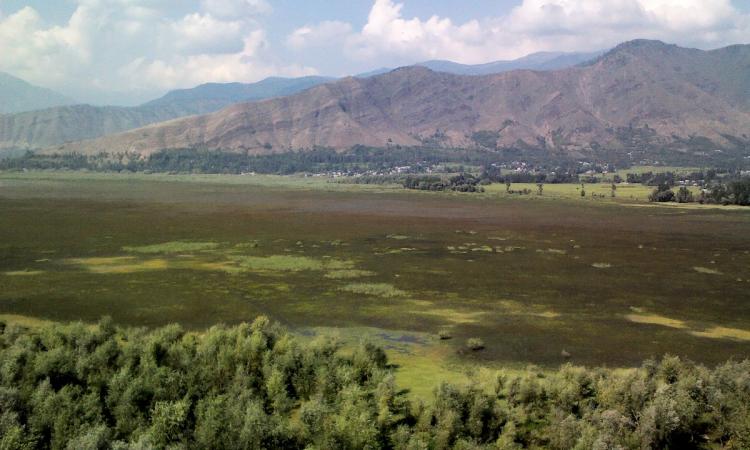
The devastating flood in 2015 in the Kashmir valley affected more than 2.5 lakh houses and displaced about 5.5 lakh people. The economic loss was massive.
Many researchers and experts believe that careful conservation and protection of the lakes, ponds and wetlands in the Kashmir valley could have reduced the scale of the devastation to a large extent.
The Wular lake is integral to the hydrological system of the Kashmir valley. India’s largest freshwater lake, the Wular lake was formed as a result of the tectonic activity and is fed by the Jhelum river. The lake, along with its marshes, regulate the water levels and offer protection against flooding.
Over the years, the drainage of associated marshes, an increase in agriculture and siltation and the plantation of willow trees for wood have reduced the size of the lake to half. As a result of it, the flood buffering capacity of the wetland has been severely compromised.
Although much of the lake has undergone an alarmingly high level of degradation, there is still a possibility for its restoration.
The cost-benefit analysis of the Wular wetland indicates a clear economic benefit from planned willow removal and dredging. Willows removed from the fringes of the Wular would assist in restoring the hydrological functioning of the wetland complex and improve the lake’s capacity to mitigate flood-related damages.
A revised plan by the state government suggests that despite high costs of dredging and possible permanent loss of carbon dioxide sequestration from the willow removal, restoring the lake is still worthwhile. There are huge benefits for the lives, resources and livelihood for the people of Kashmir from restoring the Wular wetland complex.
‘Let's Invest in Nature’ (#LetsInvestInNature) is a special series of video stories designed by the Indo-German Biodiversity Programme. It is dedicated to estimating and mainstreaming the true economic value of biodiversity in business-related decisions and policy making. Watch this short video for more information.
/articles/managing-willows-wular-lake